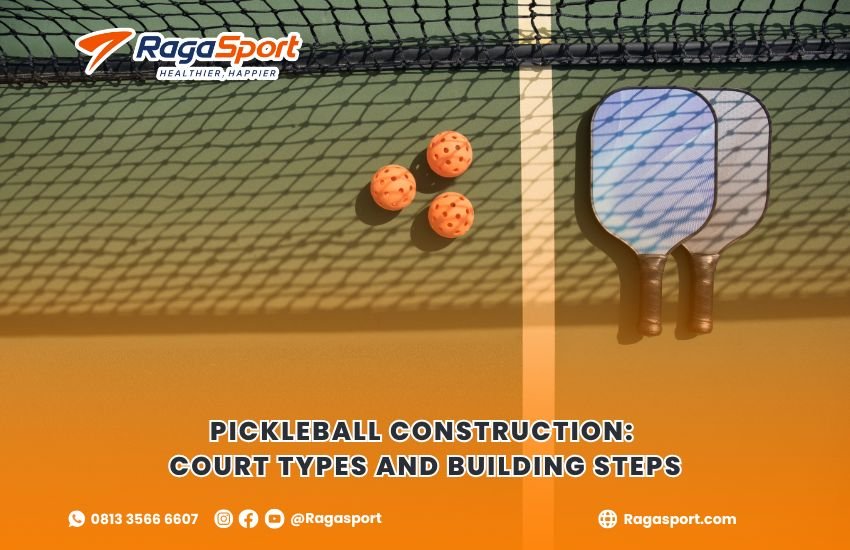Pickleball Construction: Court Types and Building Steps
Pickleball is rapidly becoming one of the most popular sports in both residential and commercial recreational spaces. As demand grows, so does the need for professional and well-built courts. This guide explains everything you need to know about pickleball construction, including court types and each step in the building process.
Table of Contents
1. Understanding Pickleball Court Types
Before starting construction, it’s crucial to determine the court type based on location, usage, and budget. There are two main categories: indoor and outdoor pickleball courts.
1.1 Outdoor Pickleball Courts
Outdoor courts are usually built on concrete or asphalt foundations and finished with acrylic coatings. They must be UV-resistant, slip-resistant, and able to withstand harsh weather.
1.2 Indoor Pickleball Courts
These are often installed in gymnasiums or multi-purpose indoor facilities using wooden, vinyl, or polyurethane flooring. Indoor courts offer consistent play but require proper lighting and ventilation.
1.3 Temporary vs. Permanent Courts
Temporary courts can be marked with tape and used in shared spaces, while permanent courts require a full construction process, including base prep, surfacing, and fencing.
2. Site Selection and Planning for Pickleball Construction
Choosing the right site is essential. Considerations include:
- Level terrain for even play
- Accessibility and visibility
- Drainage and water flow management
- Proximity to noise-sensitive areas (especially for outdoor courts)
3. Dimensions and Layout in Pickleball Construction
A standard pickleball court measures:
- 20 feet wide x 44 feet long (for both singles and doubles)
- A minimum 30×60 feet area is recommended for safe play and movement
Key features include:
- Baselines and sidelines
- Non-volley zone (the “kitchen”)
- Service areas
- Centerlines
Accurate marking is critical for fair gameplay and safety.
4. Step-by-Step Pickleball Construction Process
4.1 Groundwork and Excavation
The site is cleared of vegetation, leveled, and graded for water runoff. Sub-base materials like gravel are installed to promote stability and drainage.
4.2 Foundation Installation
Concrete or asphalt is poured and compacted to create a solid base. The surface is then smoothed, leveled, and cured for several days before surfacing begins.
4.3 Court Surfacing
Outdoor courts are commonly coated with 100% acrylic sports surfacing systems. These provide:
- Non-slip texture
- UV resistance
- Vibrant color options
Indoor courts may receive polyurethane coatings or specialized sports flooring.
4.4 Line Striping and Painting
Lines are applied using stencils or tape and painted with highly durable sports-grade paint. The court is marked for:
- Sidelines
- Baselines
- Non-volley zone
- Service boxes
4.5 Net System Installation
Poles are anchored securely, and the net is mounted to meet official specifications:
- 36 inches high at the sidelines
- 34 inches high at the center
5. Optional Additions in Pickleball Construction
5.1 Lighting
LED sports lighting extends play hours and is essential for evening games. It must be evenly distributed without glare.
5.2 Fencing
Fences help contain the ball and provide security. Chain-link fencing (10-12 feet high) is a common choice.
5.3 Seating and Shade
Benches, shade structures, and water stations can improve player comfort.
6. Maintenance Considerations for Long-Term Use
After your pickleball construction project is complete, regular upkeep will extend the court’s lifespan.
6.1 Cleaning
Blow or sweep the surface weekly. For outdoor courts, wash with mild soap and water monthly.
6.2 Resurfacing Schedule
Acrylic surfaces typically need resurfacing every 3–5 years, depending on usage and climate.
6.3 Inspecting Equipment
Check nets, posts, and surface markings periodically. Re-tighten or replace worn components as needed.
7. Choosing a Pickleball Construction Company
Working with experienced professionals ensures quality, regulation compliance, and a hassle-free process. Consider the following when choosing a construction partner:
7.1 Specialization in Sports Facilities
Pick contractors with a portfolio of completed pickleball or similar sports courts.
7.2 Licensing and Insurance
Ensure they hold the appropriate licenses and carry liability insurance for your protection.
7.3 Transparent Pricing and Timeline
Request detailed quotes that include:
- Site prep
- Materials
- Labor
- Optional features
Compare proposals and check references to make an informed decision.
8. Popular Trends in Pickleball Court Design
Modern pickleball courts are becoming more customized with:
- Multicolor courts for style and function
- Branded courts for clubs and schools
- Shared-use markings for tennis or basketball overlays
These options allow for versatility and increased ROI on facility investments.
Start Your Pickleball Construction Project with Experts
Whether for home or professional use, Raga Sport delivers expert pickleball court construction with durable materials and accurate layouts.
👉 Learn more at: https://ragasport.com
📞 Contact via WhatsApp: https://wa.me/6281335666607

